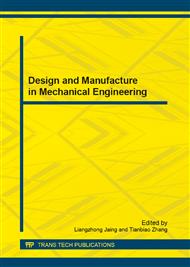p.235
p.240
p.246
p.253
p.258
p.263
p.269
p.275
p.281
Corrosion Mechanism on Offshore Wind Turbine Blade in Salt Fog Environment
Abstract:
Targeted at the phenomenon of offshore wind turbine blades cracking and tearing up, the corrosion mechanism on offshore wind turbine blade in salt fog environment is researched. By means of analyzing the blades structural damage and the corrosion in salt fog environment, the main damage forms of the blades can be summed up with a further view to discussing and analyzing the corrosion mechanism on offshore wind turbine blade in salt fog environment from the perspective of both physical and chemical corrosion. A final conclusion is reached which shows that the pitted surface of the blade developed from the pumping and milling of sand blown by wind is the incentive and hydrone diffusion and ultraviolet radiation are the main factors that lead to the aging of materials and corrosion of blades.
Info:
Periodical:
Pages:
258-262
Citation:
Online since:
September 2013
Authors:
Keywords:
Price:
Сopyright:
© 2013 Trans Tech Publications Ltd. All Rights Reserved
Share:
Citation:


